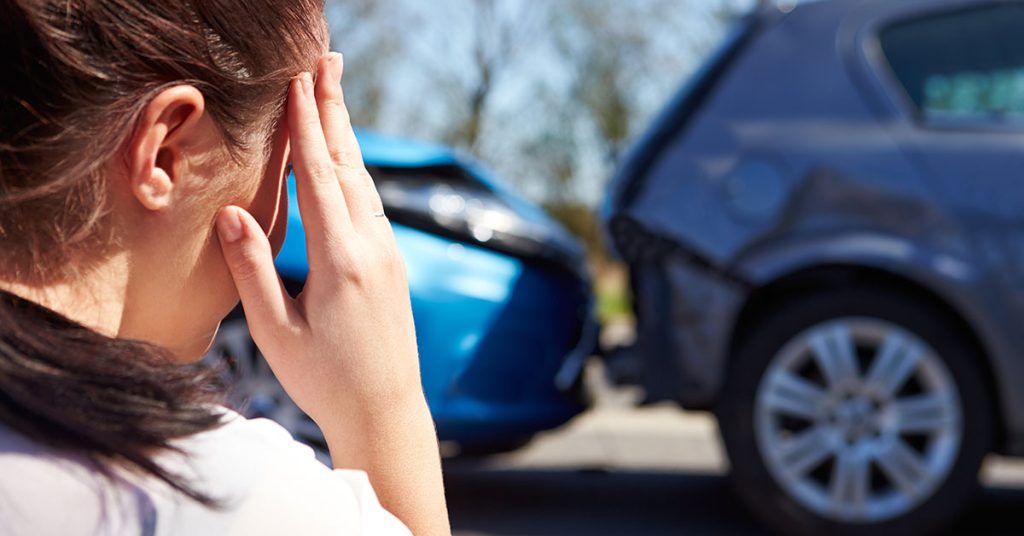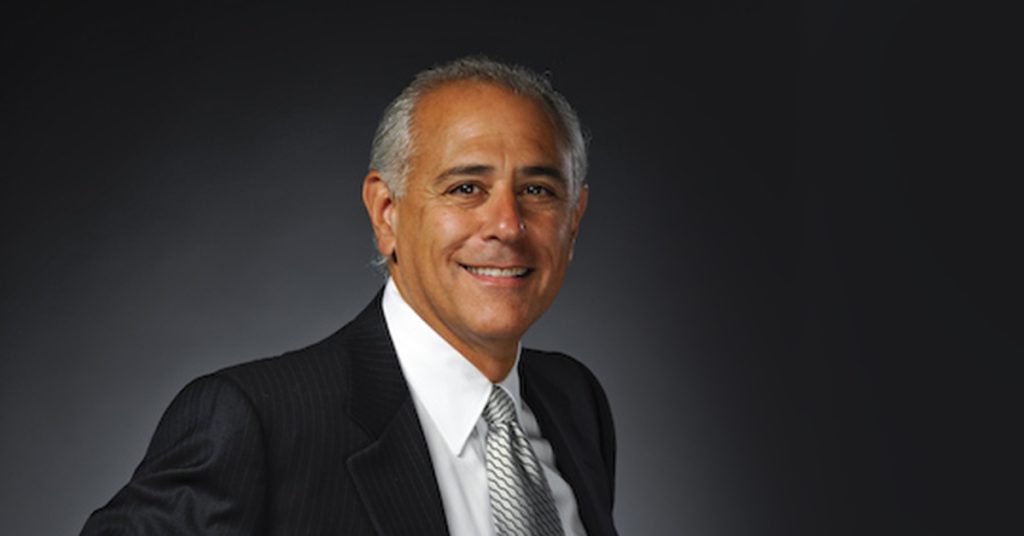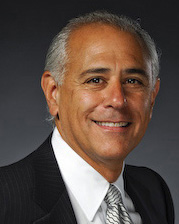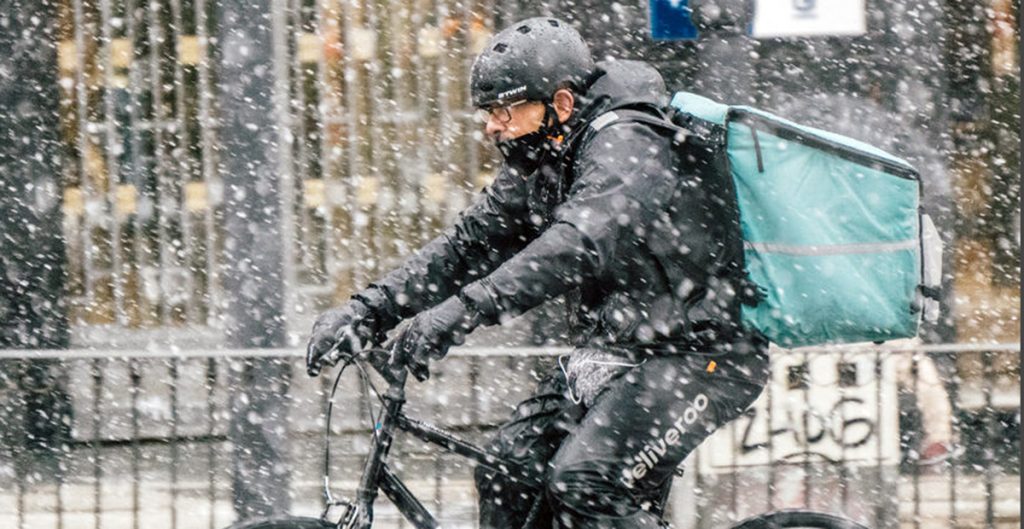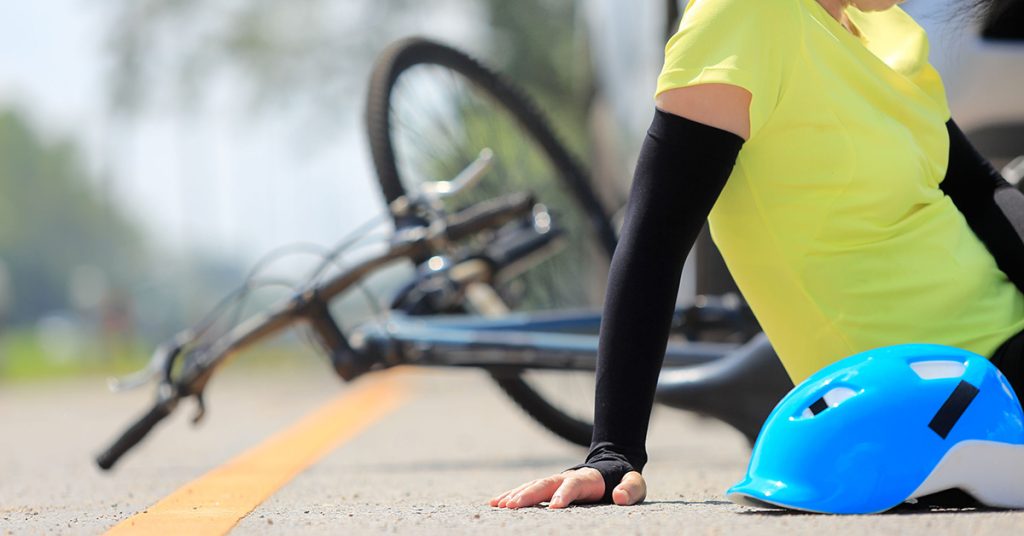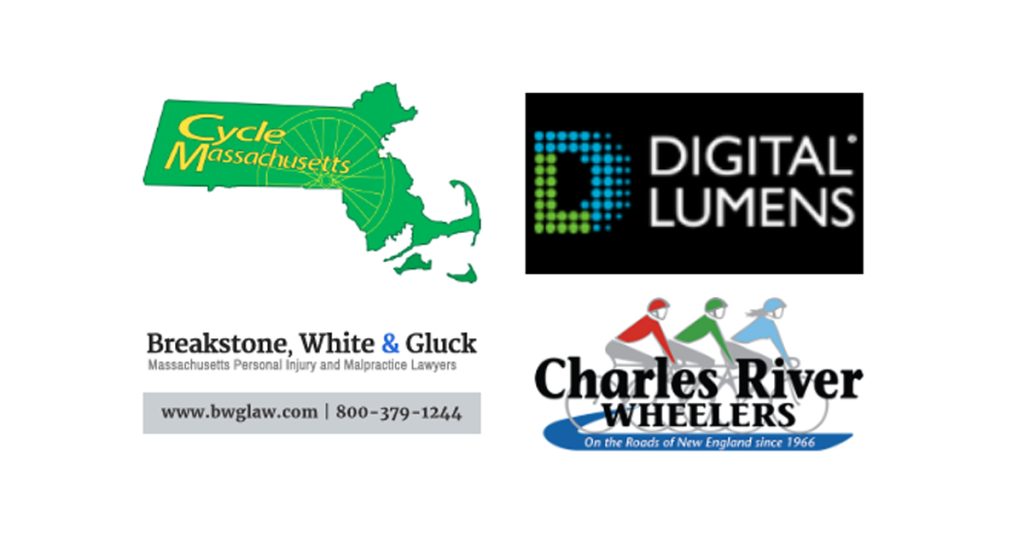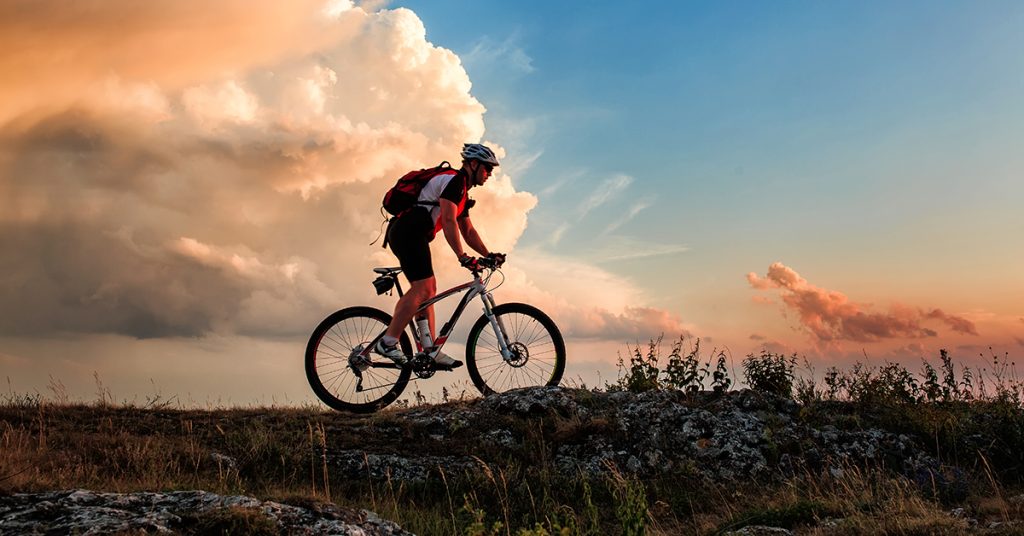Posts Tagged ‘“Boston bicycle accident lawyer”’
Brain Injury Awareness Month: Would You Recognize the Symptoms of a Concussion?
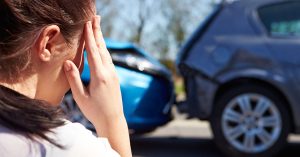
After a car accident is a critical time to seek medical care and screening for a concussion.
March is Brain Injury Awareness Month. Nearly 12 years ago, Massachusetts lawmakers passed legislation to develop a concussion safety program for high school athletes. Before they play, student-athletes and their parents must now learn about concussion symptoms. If students are injured, they must follow step-by-step guidelines for recovery. The goal is to make sure students fully heal from concussions.
Just as students have learned about concussions, Brain Injury Awareness Month offers others a chance to learn.
These are essential lessons, helping us care for ourselves and our families. The sooner one identifies potential concussion symptoms, the sooner they can seek a medical evaluation and begin rest and recovery. Below, we write about concussions, symptoms and high-risk situations when one may consider seeking a medical evaluation as a precaution.
What is a Concussion?
A concussion is often called a mild traumatic brain injury or “mild TBI.” A concussion may follow a bump, blow or jolt to the head, or a hit to the body that causes the head and brain to move quickly back and forth, according to the Centers for Disease Control and Prevention (CDC).
There may be no visible bruising, skull fracture or head injury, but the sudden movement can impact the brain’s function.
When one suffers a concussion, they may experience a range of symptoms impacting their health. It can be very difficult to read the symptoms, which may include one or more symptoms:
- headaches
- memory loss
- feeling groggy
- difficulty sleeping (or sleeping too much)
- mood and behavior changes
- balance problems
- slurred speech
- dizziness
- nausea or vomiting
- confusion
- decreased coordination
- sensitivity to light
- irritability
- In adults, one pupil may appear larger than the other.
Symptoms may appear right away or in the hours after a concussion, or they may be delayed a few days and weeks.
One misconception is a person will lose consciousness if they suffer a concussion. This is not always true. In fact, on the sports field, one coach said athletes only lose consciousness in about 10 percent of all concussions cases (Source: Heads Up Video: What is a Concussion?, CDC).
When to Consider Seeking Medical Care
As important as it is to learn about concussion symptoms, there are also times when you should just receive medical care as a precaution. This includes after children’s injuries, sports injuries, car accidents, falls or bicycle accidents.
Children and Student-Athletes

Respond promptly if you suspect your child has sustained a concussion.
Start learning now before you suspect a possible injury. Look to your child’s pediatrician and school for information on concussion prevention, symptoms and how to respond to a potential concussion. This is important because your child’s brain is going to support them throughout their life and by understanding a few basics, you can minimize their risk of suffering an injury. But if your child does suffer a concussion at some point, what you learn now will help you be ready to help them receive care and fully heal before they start their full routines up again. To help you get started, read our page on the Massachusetts sports concussion safety law and helmet laws for children. Another resource is the CDC Heads Up web page.
Motor Vehicle Crashes
Motor vehicle crashes are a leading cause of concussions and traumatic brain injury. The violent force of a collision can cause many injuries, from whip-lash to broken bones and head injuries. One can suffer a concussion in crashes at any speed and unlike other types of injuries, see no visible signs. One does not have to hit their head to sustain a concussion.
It can be hard to know whether you were injured after a car accident, so it is best to be proactive and call your primary care physician or visit a hospital emergency room.
Falls
When someone falls and hits the ground, they can suffer a concussion and it may be hard to recognize the signs, especially if the person is alone.
Older adults and younger children are more vulnerable to suffering falls. They are also at the highest risk for going without treatment. Consider how difficult it is for many adults to recognize they may have suffered a concussion; then think about young children, who may have limited speech. When it comes to young children, look for signs of discomfort, such as constant crying, trouble sleeping or the child may not eat. Contact your child’s pediatrician so they can advise you on the next step.
As for older adults, the CDC reports more than 34,000 adults age 65 and older died in falls in 2019. Many of these falls involved TBI and broken bones.
If you have an older relative or friend, talk to them about the importance of seeking medical care after any type of fall. Immediate treatment can help them identify whether they have sustained a concussion or other injuries. This puts their primary care physician in a good position to help them manage their recovery, with their full understanding of the person’s medical conditions and what medications they take.
Bicycle-Related Head Injuries
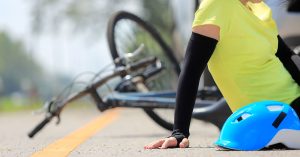
Cyclists can suffer many serious injuries in a crash. Always visit a hospital emergency room as a precaution.
Make a plan for safety. Should you ever fall on your bike or be involved in a bicycle accident, commit to seek immediate medical care right away. Have a doctor evaluate whether you sustained a concussion.
Medical care is critical for cyclists. In addition to concussions, cyclists are vulnerable to suffering broken bones around the face, jaw and fractured teeth in crashes, along with other injuries. While you may try to treat your own pain, a medical exam is the best first step to determine the source of all your swelling and injuries.
As a cyclist, you can take an important step and protect against head injury by wearing a helmet. When cyclists wear helmets, the reality is they may still suffer injuries in a collision. But cyclists are more likely to survive a bike crash without the cognitive, physical or mental complications of a severe and traumatic brain injury. This is critically important because it improves one’s long-term chances for making a full recovery.
According to the CDC, helmets reduce the risk of head injury by absorbing much of the impact energy from a fall or a bicycle accident. Helmets protect the skull and brain from more severe injury.
After a Concussion, The Importance of Follow Up Medical Care
Another time to consider medical care is in the days, weeks and months following your initial treatment for a concussion. It is important that you fully heal. If you suffer a second concussion while you are still recovering, you are at risk for second impact syndrome and long-term complications.
The CDC reports many concussions are not fatal. Many people recover from concussions within a few weeks, with rest, plenty of sleep and patience.
But some injuries take more time. The National Institute of Health reports one study found nearly a quarter of patients struggle with physical and mental problems related to a concussion a full year later. Another study tracked 831 patients at 11 major trauma centers across the country and found not every patient receives follow-up care.
- Within three months of their injury, fewer than half of the patients – 44 percent – had followed up with a health care professional.
- Notably, when patients visited medical centers with dedicated TBI clinics, they were more likely to receive follow-up care.
- Patients who had more serious injuries (those who had CT Scans that showed tissue damage) had a higher rate for follow-up care, but even then only 61 percent sought follow-up care.
There are many reasons patients may not follow up after a concussion. This study noted just 42 percent of patients received educational materials as they left treatment; just 27 percent received a follow-up call from the hospital.
Make it your priority to follow up with your primary care doctor for as long as it takes.
Follow your doctor’s instructions for every phase of your recovery: when you are ready to drive and go back to work. Follow any limits your doctor sets, such as restricting cell phone use.
Take the family member along to your doctor’s appointments. This gives your loved one a chance to learn about the symptoms of a concussion and how you should progress.
Ask a loved one to play an active role in your treatment and help you observe your recovery. You may need help tracking activities at times, such as how many hours you sleep or how many times you contact your doctor with concerns. Write down any medical instructions you receive, or print messages from your online medical records, so you and your loved one can review them together over the next few months.
Free Legal Consultation – Boston TBI Attorneys
At Breakstone, White & Gluck, our Boston personal injury lawyers have over 100 years combined experience representing those who have been seriously injured or killed by the negligence or wrongdoing of others.
Our lawyers have extensive experience representing clients who have suffered concussions and traumatic brain injuries as a result of someone else’s negligence, helping them recover compensation for their medical expenses, loss of future income and other damages.
Our attorneys represent clients in Boston, Cambridge, Arlington, Somerville, Everett, Quincy, Milton and across Massachusetts. If you have been injured, learn your legal rights. For a free legal consultation, call 800-379-1244 or 617-723-7676 or use our contact form.
The Importance of Traffic Cameras in Establishing the Truth: A Video Speaks a Thousand Words
Attorney Ronald E. Gluck recently wrote an article touching on the importance of traffic cameras in his investigation for his client, a cyclist who was seriously injured by a truck. We invite you to read the article, “The Importance of Traffic Cameras in Establishing the Truth: A Video Speaks a Thousand Words,” which is published on the Charles River Wheelers’ website.
You can read more of Ron’s articles by signing up for WheelPeople – The Charles River Wheelers’ newsletter – or by visiting Breakstone, White & Gluck’s website.
Driving Safely Near Cyclists During Boston’s Winter Pandemic
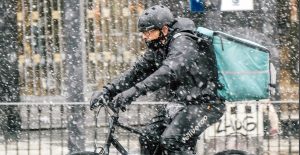
In Boston, drivers can take extra caution when traveling near a cyclist during winter.
Gone are the days when drivers only had to watch for cyclists during the warm weather in Massachusetts. Cyclists have become a fixture on our roads year-round in Boston, including in January and as the pandemic continues.
As a driver, we urge you to slow down this winter and look for cyclists. Also give cyclists extra room so they can respond to a traffic situation without wiping out or being struck in a bicycle accident.
While most cyclists try to avoid stormy weather, there are times when cyclists still find themselves riding in slippery or snowy situations. Also remember that days after a snow fall, snow plows can make another pass at roads and parking lots, which can interfere with a cyclist’s path as well as pedestrians, cars and delivery trucks.
If you fail to check for cyclists, you could cause a cyclist a life-threatening injury and be held financial liable by the victim. Do all you can to avoid causing a cycling accident. Take a few minutes to ask a cyclist about the challenges they face on the road, continuously check for cyclists while you drive and always assume there will be cyclists on the road.
This blog shares safety reminders to help Massachusetts drivers travel safely near cyclists this winter.
Massachusetts Bicycle Laws. In Massachusetts, cyclists have rights and responsibilities. One of the first rights concerns where cyclists can ride. Under M.G.L. c. 85, § 11B, cyclists are allowed to ride in a bike lane, on the side of the road or in the main traffic lane. Up to two cyclists can ride abreast in the main traffic lane. Cyclists should travel in the same direction as traffic.
When you see a cyclist, remember they can switch lanes or turn at any time. They may not always be able to safely use hand signals. Likewise, if you find yourself behind a bicycle and they are blocking traffic, you should practice patience or take another route.
Common Bicycle Injuries. Cyclists are vulnerable on the roads, traveling between motorized cars, trucks and other vehicles. A cyclist can be injured when a driver makes an error at an intersection or cuts the cyclist off when turning.
When a truck turns at an intersection, the driver has a responsibility to check for a cyclist before turning right. Truck drivers who neglect this step can cause a fatal crash injuring a cyclist. This is often called a “right hook” crash.
Another type of bicycle crash is called a “left hook” accident. This type of collision happens when a vehicle travels straight or turns left at an intersection, cutting off or colliding with a cyclist at an intersection. The cyclist is usually traveling in another direction.
By simply remembering to check for cyclists at intersections, truck drivers and motorists can make a big difference in preventing an accident or fatality. As you wait for a red light, try to look several times for cyclists: front, right, left and back. Many drivers neglect to fully check their blindspots, which is where cyclists are likely to be.
Darkness and Storms. The majority of fatal bike crashes in 2018 occurred between 6 p.m. and 9 p.m., according to the National Highway Traffic Safety Administration (NHTSA). Darkness falls earlier during the winter and there are also snow and rain conditions. Be patient if you see a cyclist pedaling in snow conditions.
As a driver, another step you can take is to look for well-lit roads. You can also look for the light. As a driver, if you see a flicker of color ahead, this is likely a cyclist or pedestrian.
Under Massachusetts law, cyclists are required to use bike lights when riding from thirty minutes after sunset until thirty minutes before. Bike reflectors are also required. Cyclists must have reflectors wrapped around both pedals or around their ankles. The bike lights should be visible from distances of 500 to 600 feet.
See the Cyclist From A Distance. In addition to checking for cyclists at intersections, always look ahead for cyclists. Scan the side of the roads. Cyclists should be traveling on the same side of the road as you in the same direction, but they may not always do so, especially if they are displaced by snow conditions. By taking time to look ahead, you give yourself more time to respond.
Read more tips on cycling safety in our article, “Facts About Massachusetts Bicycle Laws.”
About Breakstone, White & Gluck – Free Legal Consultation
Breakstone, White & Gluck has extensive experience representing cyclists who have been injured in bicycle accidents by negligent drivers in Boston, Cambridge and across Massachusetts. Our attorneys are skilled at investigation and negotiation with insurance companies to help our clients obtain the compensation they need for their recovery.
If you have been injured, learn your legal rights. Call Breakstone, White & Gluck at 800-379-1244 or 617-723-7676 for a free legal consultation. You can also use our online contact form.
Bicyclist and Pedestrian Deaths Keep Rising
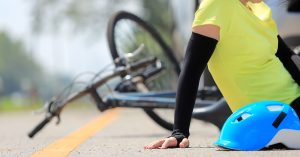 New federal data shows a 2.4 percent reduction in overall traffic deaths last year. But that’s not the full story. The roads were not any safer for pedestrians and bicyclists last year. These groups saw an increase in deaths, now making up nearly 20 percent of all traffic deaths. Many say it’s time to accelerate the conversation on safe road design.
New federal data shows a 2.4 percent reduction in overall traffic deaths last year. But that’s not the full story. The roads were not any safer for pedestrians and bicyclists last year. These groups saw an increase in deaths, now making up nearly 20 percent of all traffic deaths. Many say it’s time to accelerate the conversation on safe road design.
The Washington Post recently reported on the new data, which comes from the National Highway Traffic Safety Administration (NHTSA)’s Fatality Analysis Reporting System.
It shows nearly 36,600 people died in traffic accidents in 2018, a 2.4 percent decrease from 2017, according to The Washington Post. Traffic experts cite several areas of progress. There were fewer deaths caused by speeding and drinking and driving, and a 10 percent reduction in children’s fatalities. Motorcycle fatalities also declined about 5 percent.
What remains troublesome is bicyclists and pedestrians are at high risk. Bicycle accidents and pedestrian accidents are claiming more lives than ever – about 20 percent of all traffic deaths combined. This is a sharp rise, particularly in pedestrian deaths. Just 10 years ago, pedestrians made up 12 percent of all traffic deaths. They now represent 17 percent of all traffic fatalities.
The data shows that 6,283 pedestrians were killed in 2018, a 3.4 percent increase. Another 857 people were killed on bikes or similar non-motorized vehicles, a 6.3 percent increase.
With this new data, many are considering our nation’s antiquated roads, which the Governors Highway Safety Association says were not designed to accommodate so many pedestrians and bicyclists. Over the past decade, cities have encouraged walking and biking as a way to beat the traffic congestion. But use has far exceeded the visions of planners, especially when you considered developments, such as bike-shares, e-scooters and self-driving cars.
The Governors Highways Safety Association further stated that a combination of initiatives would be necessary to improve safety for pedestrians and cyclists, from road engineering to educational approaches.
Pedestrian and Bike Safety in the Late Fall in Massachusetts
This is a challenging time of the year for bike commuters and pedestrians in Massachusetts. The days are getting shorter and darker. And you have to be aware of the statistics. According to the NHTSA data, about 76 percent of pedestrian traffic fatalities occur after dark.
If you walk, consider keeping a neon safety vest in your work bag. Wear it when you go to work and as you leave work. Continue to use crosswalks with traffic signal buttons. Cross with other people.
If you ride your bike, wear your bike helmet and use bike lights. Bike lights are required under Massachusetts law. You must have a white light in front of your bike and a red light in back. Read our article, Facts About Massachusetts Bicycle Laws, to learn more.
Free Legal Consultation – Boston Pedestrian and Bicycle Accident Lawyers
With more than 100 years combined experience, Breakstone, White & Gluck is a leading personal injury law firm in Boston. Our attorneys specialize in representing those injured in motor vehicle accidents, including pedestrians and bicyclists, in Boston, Cambridge and across Massachusetts. If you have been injured, learn your legal rights for seeking financial compensation for your losses, including medical expenses, lost wages and pain and suffering. For a free legal consultation, contact us at 800-379-1244 or 617-723-7676 or use our contact form.
Police Investigate Truck Crash Which Killed Boston Cyclist in Fenway Neighborhood
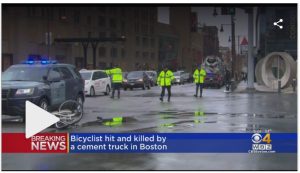 Massachusetts State Police are investigating a tragic crash which killed a female cyclist today in a heavily congested Boston intersection. The bicycle crash happened in the city’s Fenway neighborhood, less than a half mile from Fenway Park. Witnesses described a frightening scene as emergency responders attempted to resuscitate the woman, according to WBZ-TV. The woman was transported to Brigham & Women’s Hospital, where she sadly died from her injuries. The woman’s bike was left crushed in the road as State Police blocked off two traffic lanes to investigate.
Massachusetts State Police are investigating a tragic crash which killed a female cyclist today in a heavily congested Boston intersection. The bicycle crash happened in the city’s Fenway neighborhood, less than a half mile from Fenway Park. Witnesses described a frightening scene as emergency responders attempted to resuscitate the woman, according to WBZ-TV. The woman was transported to Brigham & Women’s Hospital, where she sadly died from her injuries. The woman’s bike was left crushed in the road as State Police blocked off two traffic lanes to investigate.
The cement truck reportedly struck the woman on Brookline Avenue at Park Drive around 1:30 p.m., according to Boston.com. Just before 4 p.m., State Police reported the woman had died. The cement truck read, “Boston Sand & Gravel Co.” The driver reportedly stayed on the scene and was also transported to a hospital for evaluation. At this time, State Police have not released the name of the woman, the driver or confirmed the cement truck’s owner.
News photos showed the truck crash that killed the cyclist was near a major traffic block, near Emmanuel College, Boston University’s Fenway Campus and the Emerald Necklace walkway. Nearby is Longwood Medical area, including Brigham & Women’s Hospital, Beth Israel Deaconess Medical Center and Children’s Hospital.
Police focused their investigation on the center of the large intersection, measuring marks in the road, according to WBZ-TV. The bicycle was crushed and the seat was detached. The cement truck remained on site for several hours before being towed away.
About Breakstone, White & Gluck
Breakstone, White & Gluck is one of the most respected personal injury law firms in Boston. With more than 100 years combined experience, our attorneys represent cyclists and their families in personal injury and wrongful death lawsuits. With a special expertise in investigating truck crashes and an expansive knowledge of the trucking industry, our attorneys have a record of successfully negotiating the best financial results for our clients. Time and again, we have effectively presented the evidence and negotiated the maximum coverage on insurance policies. If you have been injured, learn your rights. For a free legal consultation, visit 800-379-1244 or 617-723-7676 or use our contact form.
Breakstone, White & Gluck’s Experience
We invite you to read about one of our recent cases below or in Boston Magazine. Attorney Ron Gluck was recently interviewed about his work for the family of a cyclist who was struck and killed by a truck in Back Bay.
MassBike and Light Brigade 2018: Helping Cyclists Be Seen at Night
Breakstone, White & Gluck was pleased to support MassBike’s Light Brigade 2018, which delivered bike lights to cyclists who needed a set so they can be visible to drivers. All Photos: Courtesy of MassBike Light Brigade 2018 Facebook Photo Album.
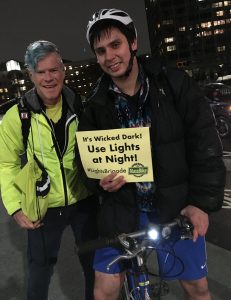 We want to say job well done to MassBike for helping cyclists ride safely at night in Massachusetts. Over the past few weeks, MassBike has been distributing bike lights to cyclists from near and far, shining a light on the importance of staying visible during these dark days of winter.
We want to say job well done to MassBike for helping cyclists ride safely at night in Massachusetts. Over the past few weeks, MassBike has been distributing bike lights to cyclists from near and far, shining a light on the importance of staying visible during these dark days of winter.
Under Massachusetts law, cyclists are required to use bike lights from 30 minutes after sunset until 30 minutes before sunrise. The front of the bike must be equipped with a white light (visible at least 500 feet away), with a red light or reflector on the back. Drivers must be able to see the rear light from at least 600 feet away.
MassBike is committed to getting lights to cyclists, reaching across 90 miles with this year’s campaign. Volunteers have given out lights in Boston, including in the Allston, Jamaica Plain and Charlestown neighborhoods and nearby: Cambridge, Lynn, Newton and Needham. Further west, cyclists in Northampton, Holyoke and Worcester also received lights. We’re told there may be more stops.
Breakstone, White & Gluck was a sponsor of MassBike’s campaign in 2017 and 2018. Other sponsors of the MassBike’s 2018 Light Brigade include Digital Lumens, Cycle Massachusetts and Charles River Wheelers.
More questions about Massachusetts bicycle laws? Read our article, “Quick Facts About Massachusetts Bicycle Laws.”
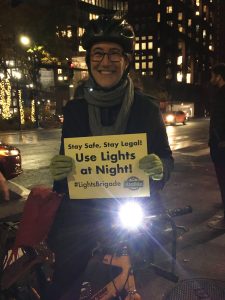
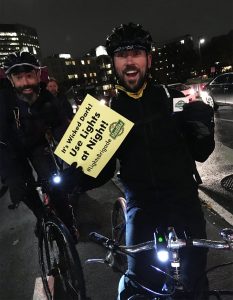
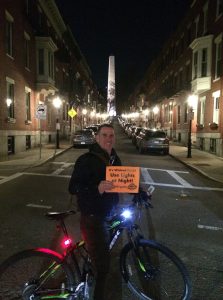
Photos: Courtesy of MassBike Light Brigade 2018 Facebook Photo Album.
About Breakstone, White & Gluck
With more than 100 years combined experience, Breakstone, White & Gluck is a Boston law firm specializing in personal injury and medical malpractice cases. Our partners founded our firm in 1992 and we have supported bicycle safety the entire way. For more than 20 years, we have sponsored bicycle clubs and organizations in the Boston area (and in some cases, ridden along the way; one of our partners is also a cyclist).
In 2013, our attorneys launched our Project KidSafe campaign, which has now given away more than 20,000 bicycle helmets across Massachusetts. Along the way, we have proudly worked with over 40 community organizations, including Massachusetts Safe Routes to School, more than a dozen police departments and bicycle committees in Milton, Westborough and Framingham. In 2017, we were recognized as a Silver Level Bicycle Friendly Business by the American League of Bicyclists.
Cyclists: Are You Lighting Up the Road?

Cyclist on vacation in Massachusetts wearing a helmet but not using bike lights
Fireworks are lighting up spectacular skies this week. All the color makes us think about bike lights. If you are a cyclist, are you lighting up the road this summer? Are you using bike lights and wearing bright colors to stay visible to drivers?
Whether you are commuting to work or enjoying a leisurely ride on vacation, bike lights are essential to preventing bicycle accidents. And many cyclists don’t realize this, but bike lights are required by law in Massachusetts.
We encourage you to buy yourself bike lights as soon as possible. If you already have lights, please check to make sure they are working properly. Bicycle accidents have risen in the U.S., reaching a 25-year high in 2016, according to the Insurance Institute for Highway Safety. The majority of accidents happened between 6 and 9 p.m. The second peak time was 9 p.m. to midnight.
Massachusetts Law
Under Massachusetts law, cyclists are required to use bike lights if they ride after dark. The law is M.G.L c.85 § 11B.
Bicycles must be equipped with a white light facing forward and a red light facing backward. These lights must be in use from thirty minutes after sunset until thirty minutes before sunrise. The white light must be visible from at least five hundred feet away. The red light on the back must be visible for at least six hundred feet. Reflectors on both pedals facing front and back are also required. If a cyclist has no reflectors, they can wear reflective material around their ankles.
Plan
If you have your own bike, buy your own lights now. You can buy them online or at a local store for a few dollars. For everyone else, if there is a chance you may ride, purchase some small bike lights. They pack neatly in your work bag or travel luggage.
There are many different types of lights available. When you purchase lights, take note of the size, battery type and battery life and if they are designed for day or night use. Remember that lights are required for the front and back of your bike. Attaching lights to your helmet or other parts of your bike are helpful for safety, but are considered extra under the law. Here is an article about bike lights to help you get started.
There is good news for Boston commuters. There are built-in lights on the rental Blue Bikes in Boston, Cambridge, Somerville and Brookline.
Stay Visible
Don’t stop at bike lights. Purchase a neon reflective safety vest, tape and any other clothing to help drivers see you. Amazon is full of ideas.
Know Your Bike Route
Before you ride at night, plan your route. Choose areas which are well lit and have clearly marked bike lanes. Travel the route during the day before you go at night.
Stay Informed
Monitor social media accounts for local police departments and bike committees which serve the area. Sign up for the newsletters offered by bike committees. Cyclists write these newsletters specifically for other cyclists and their experience is invaluable, especially when riding and making decisions at night.
Attorney Ronald Gluck Interviewed by Boston Magazine, Says Video Footage Shows Truck Driver Was Responsible for Dr. Anita Kurmann’s Death
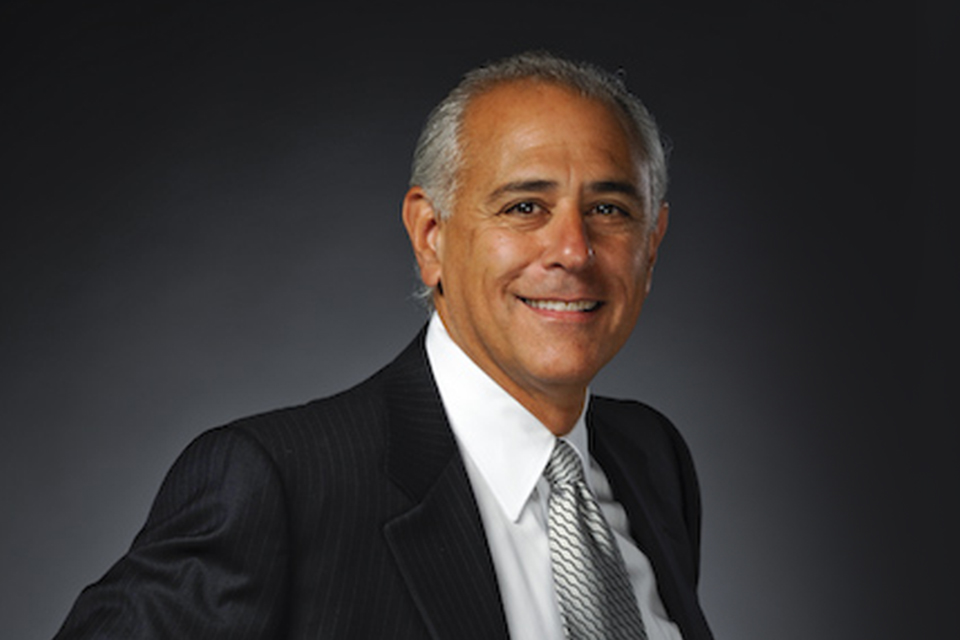
Attorney Ronald E. Gluck was interviewed by Boston Magazine about the truck crash that killed his client, the late Dr. Anita Kurmann. Gluck said he had to wait 20 months after the truck’s collision with the cyclist to obtain the video surveillance from the Boston Police Department. While the Boston Police Department found the truck driver was not responsible, Gluck said his investigation found the truck driver caused his client’s death. Gluck negotiated a financial settlement with the truck driver and his insurance company on behalf of Kurmann’s estate in June 2017.
Attorney Ronald E. Gluck is speaking about the video footage of the 2015 truck crash that killed his client, Dr. Anita Kurmann.
Twenty months after the fatality occurred, the Boston Police Department completed its investigation and concluded that the truck driver was not responsible for the cyclist’s death. The video footage, which came from a traffic camera at the intersection where the tragedy occurred, was in the hands of the police the day the incident occurred. Yet, the Kurmann family and their attorney had to wait twenty months to see the video and to obtain any witness information from the police department, Gluck said. Multiple subpoenas sent to the police were met with a refusal to produce the information until the police concluded it investigation.
“One of the most difficult aspects of the case was that Anita’s family had to wait twenty months to obtain the video footage showing how the incident occurred…Families should have the right to know the facts in these situations,” he said.
Gluck said his own investigation found that the truck driver was responsible for Kurmann’s death.
“Once we were able to obtain a copy of the video and have it analyzed by a highly qualified expert, that expert provided compelling evidence that the conclusion reached by the Boston Police Department was wrong,” Gluck said.
Within 2 months of obtaining the video and witness accounts of the fatality, Gluck was able to demonstrate that the tragedy was caused by the truck driver’s negligence and negotiated a financial settlement with the truck driver and his insurance company on behalf of Kurmann’s estate. The settlement was reached in June 2017.
Gluck added, “I have great respect for the Boston Police Department, but we believe they got it wrong in this case. The truck driver caused the fatality, ending the life of a talented surgeon and devoted family member.”
MassBike also conducted an investigation into the case and concluded that the death resulted from the truck driver’s negligence.
Dr. Kurmann, a 38-year-old endocrine surgeon from Switzerland, was a leading research scientist at Beth Israel Deaconess Medical Center and Boston University School of Medicine. She was hit on an August morning on the corner of Massachusetts Avenue and Beacon Street. The truck driver kept going, but was located out of state later that day.
Gluck has represented plaintiffs in personal injury cases for more than 35 years. He specializes in cases involving catastrophic injury and death resulting from trucking and motor vehicle collisions, bicycle and motorcycle accidents and pedestrian injuries.
Gluck was interviewed in Boston Magazine’s May 2018 issue, for an article called “What Happens When You Kill a Bicyclist?”
Three Bike Helmet Donation Events from Our Project KidSafe Campaign
Wearing a bicycle helmet is the most effective way to prevent a serious head injury on a bicycle. It is most important for young children who are still in development and building their strength.
Breakstone, White & Gluck is continuing its commitment to bicycle safety by donating children’s bicycle helmets through our Project KidSafe campaign. Here are a few recent and upcoming events:
Kiwanis Club of Somerville. For the third year, we partnered with the Kiwanis Club of Somerville at Bike Safety Day on May 16th. Each year, the Kiwanis holds the event in a different neighborhood; this year’s event was held at the Dr. Albert F. Argenziano School at Lincoln Park. There was a great turnout and the Kiwanis and Attorney David W. White donated nearly 120 bicycle helmets. Children were also offered free bike inspections, reflectors, safety information and the chance to test out their skills on bicycle obstacle courses. Read more about the Kiwanis Club of Somerville.
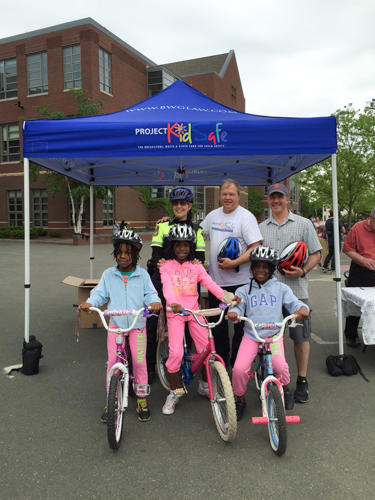
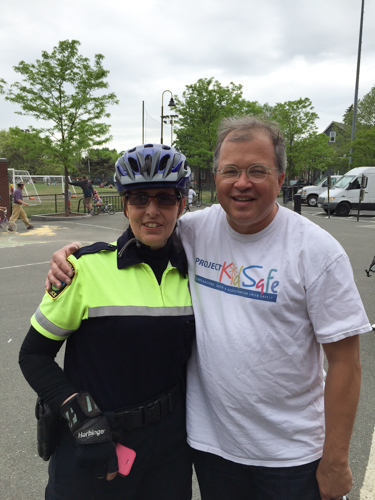
Worcester Earn-a-Bike. This community bicycle shop teaches local residents the basics of bicycle maintenance while letting them work to earn a free bicycle. If you are under 17 years old, you must volunteer for 5 hours to receive a free bicycle and anyone over age 17 must volunteer for 10 hours.
Worcester Earn-a-Bike is also known for its popular annual Kids Bike Sale. This year’s event will be held on June 6th. This is a fun event because every child’s bicycle is on sale for just $5. Breakstone, White & Gluck participates by donating free bicycle helmets to children who need one. This is the second year we have partnered up with Worcester Earn-a-Bike. Read more about Worcester Earn-a-Bike.
Friends of Lexington Bikeways. The Friends of Lexington Bikeways donated bicycle helmets from Project KidSafe to children at Discovery Day on May 23. The group showed children how to properly fit the helmets and spoke about safety with parents and children. This is the second year we have partnered up with the Friends of the Lexington Bikeways, which is active in promoting and supporting safe cycling and development of bike routes. Read more about the Friends of Lexington Bikeways.
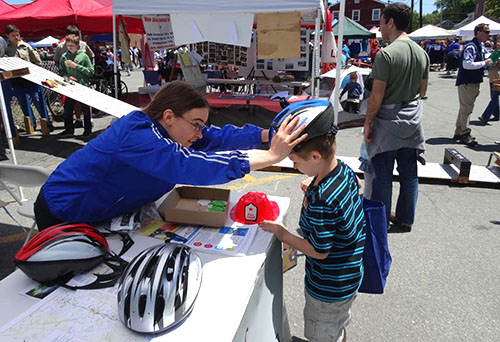
Photo: A volunteer helps a child adjust a bicycle helmet at Discovery Day in Lexington, Massachusetts.
Free Bike Helmets for the Children at Framingham Earth Day Festival Last Weekend
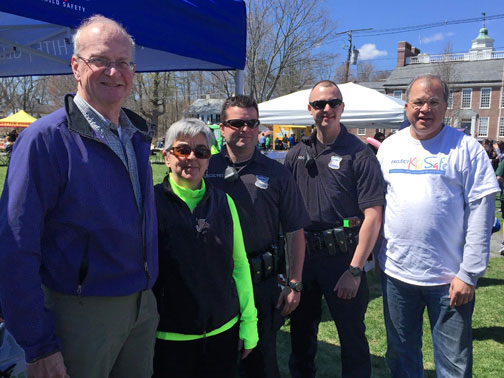
Photo left to right: Bill Hanson, chair of the Framingham Bicycle and Pedestrian Advisory Committee, volunteer Maura Kelly, Framingham police officers and Attorney David W. White of Breakstone, White & Gluck.
Breakstone, White & Gluck, the Framingham Bicycle and Pedestrian Advisory Committee, and the Framingham Police Department teamed up and gave away 120 bicycle helmets to children last weekend at the 5th Annual Framingham Earth Day Festival.
Breakstone, White & Gluck donated the helmets through our Project KidSafe initiative and attorney David W. White participated in the event, along with advisory committee members, including Bill Hanson, chair of the advisory committee, member Joseph Repoli, volunteer Maura Kelly and Framingham police officers.
Framingham Earth Day is held on the Framingham Centre Common and each year the event grows. It began in 2011 with 55 vendors encouraging residents to make eco-friendly choices. This year, nearly 100 vendors turned out. Breakstone, White & Gluck first participated in the festival last year.
Through our Project KidSafe initiative, Breakstone, White & Gluck has donated over 3,500 bicycle helmets to children in the Boston and Worcester areas. We expect to have donated more than 6,000 bicycle helmets by year’s end. Our goal is to encourage children to wear a bicycle helmet every time they ride.
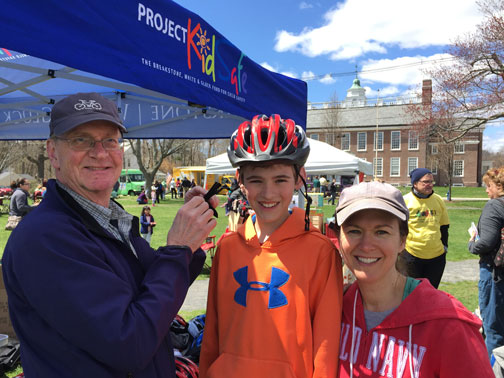
Cyclists of all ages should wear bicycle helmets to protect themselves from a serious head injury. But bicycle helmets are especially important for children, and they are required to wear them by law in Massachusetts.
Children suffer more than half of all bicycle-related injuries and deaths which require emergency department care each year, according to the Centers for Disease Control and Prevention (CDC). Some 26,000 of these bicycle-related injuries to children and teenagers are traumatic brain injuries treated in emergency rooms.
Watch this video on how to properly fit a bicycle helmet or visit our bike safety web page.
Read More


